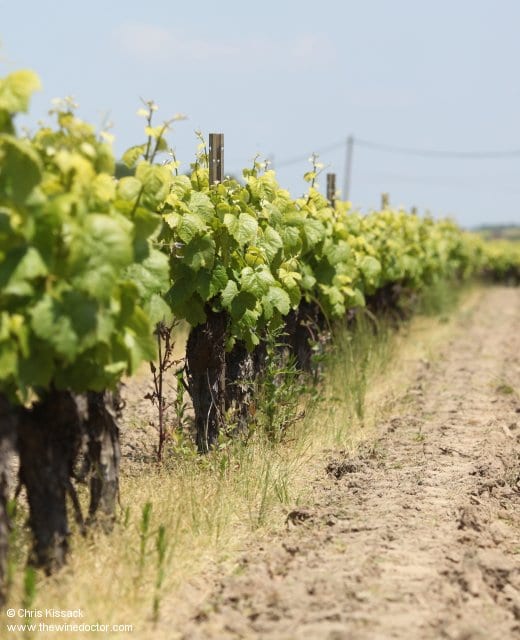Domaine Luneau-Papin: Vineyards
Domaine Luneau-Papin is located in Le Landreau, which lies about 20 kilometres south of Nantes, in the heart of the Muscadet Sèvre et Maine region. This is a landscape characterised by gently rolling vineyards and varied terroirs including micaschist, gneiss and schist, as well as exotic forms of igneous rocks, not least the evocatively named serpentinite.
When he took up the running of the domaine during the 1970s Pierre Luneau-Papin had worked hard to consolidate it with new plantings. Many of the vines he planted in these early days were, by the time we first met, around thirty years of age, and they formed the backbone of the domaine. These vines were – like many domaines in the region – spread across a large, sprawling and multi-parcellated collection of vineyards which he tended using conventional methods. This was (and for many, still is) the norm in Muscadet, a region where wines do not generally sell at high prices. You need a large vineyard to make ends meet, and you work conventionally, rather than organically, to protect your crop. One lost harvest could easily tip a domaine into bankruptcy, as was seen after the frost of 2008 when approximately 5,000 hectares of vines were abandoned in just one year.
After Pierre-Marie Luneau stepped up in 2011 the domaine was perhaps ripe for change. The family were looking after 50 hectares of vines, although this did contract a little, coming down to 45 hectares over the next few years. Of these, about two-thirds were owned by the Luneau-Papin family, while the remaining one-third was worked en fermage. The majority of the vineyards were planted to Melon de Bourgogne, with just 2 hectares committed to Folle Blanche (the variety behind the Gros Plant du Nantais appellation). They also still had some red varieties at this time, including Gamay and Merlot, although I never saw or tasted the wines. It was, despite the high quality of the wines and the readily identifiable range of cuvées parcellaires, still a large-scale operation where volume mattered.
There were two significant developments that came during the next decade, both driven by Pierre-Marie and Marie. The first, a long-term aim, was the move to organic and ultimately biodynamic viticulture. The second was prompted by the new scourge of all Loire Valley vignerons, which is frost.

